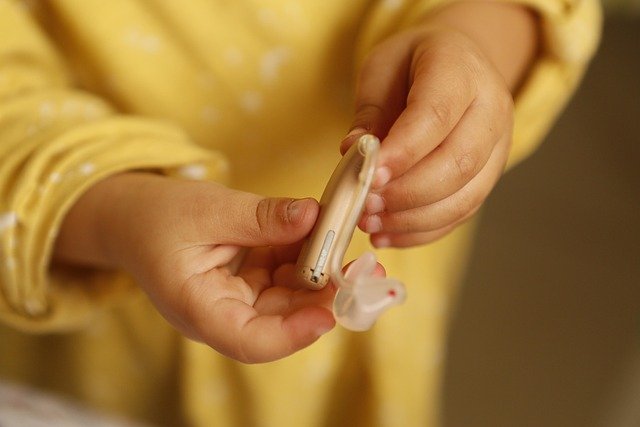Reducing Waste Through Sustainable Changing Choices
Choosing how to change and manage diapers can significantly affect household waste, environmental impact, and daily convenience. This article outlines practical, sustainable options—ranging from product choices to disposal and travel strategies—that help families reduce waste while keeping comfort, fit, and skin health in mind.

Reducing the environmental impact of diapering starts with practical choices that balance hygiene, comfort, and waste reduction. Families can reduce landfill contributions by selecting products and habits that prioritize absorbency, fit, and breathability while also thinking through disposal, travel plans, and long-term costs. This article explains materials and options, how to manage overnight use, and what trade-offs to expect when choosing biodegradable or hypoallergenic alternatives.
This article is for informational purposes only and should not be considered medical advice. Please consult a qualified healthcare professional for personalized guidance and treatment.
How do absorbency and comfort shape waste?
Absorbency determines how often a diaper needs changing; higher absorbency often means fewer changes and less overall waste, particularly for daytime use. Comfort and proper moisture control also reduce rash risk, which can decrease reliance on creams or frequent changes. When evaluating products, look for balanced absorbent cores that maintain comfort without excessive bulk. Materials that retain more fluid per layer can extend change intervals, but always prioritize baby skin health and the manufacturer’s guidance on safe wear times.
How should fit and sizing affect choices?
A proper fit reduces leaks and the need for extra changes—both contributors to waste. Selecting the correct sizing based on weight ranges ensures the diaper’s leakproof features function as designed. Adjustable tabs and contoured designs improve fit across body shapes. Consider trying sample packs or smaller starter sizes to refine fit before buying larger, bulk packs. Good fit also enhances comfort and reduces chafing, which helps maintain skin integrity and may reduce the need for additional skincare products.
Are overnight and travel needs different?
Overnight and travel settings often require products with higher overnight absorbency and reliable leakproof barriers. Overnight-specific diapers and boosters can prevent nighttime leaks and reduce mid-sleep changes, while disposable, compact travel options prioritize convenience and disposal. For travel, consider packing biodegradable disposal bags or sealed containers to manage used diapers responsibly until they can be discarded according to local services. Planning for overnight absorbency can cut down on the total number of diapers used per week.
Which materials affect breathability and skincare?
Materials influence breathability, hypoallergenic potential, and skin comfort. Breathable outer layers and soft inner linings reduce trapped moisture and friction, supporting healthier skin. Hypoallergenic products minimize fragrances and known irritants, and some brands use plant-based or chlorine-free pulp to reduce exposure to certain chemicals. Skincare compatibility matters—if creams or ointments are used, ensure the diaper’s materials and absorbency level accommodate them without compromising fit or leakproof function.
Do hypoallergenic or biodegradable options cut disposal waste?
Hypoallergenic options primarily address skin sensitivity; while they can improve comfort, they don’t necessarily reduce waste volume. Biodegradable diapers may use compostable materials and lower-impact fibers, but real-world biodegradability depends on local disposal systems—many biodegradable products require industrial composting to break down effectively. Choosing compostable packaging and understanding local disposal routes can make biodegradable selections more effective at reducing landfill burden. Balance expectations: some biodegradable items still leave behind non-compostable components like elastics or adhesives.
Costs: pricing comparison and disposal insights
Real-world cost considerations influence which sustainable choices are practical. Upfront costs for eco-focused or biodegradable diapers often exceed conventional options, but some families offset costs through extended wear intervals (with higher absorbency), careful sizing to reduce leaks, or selective use of premium products for overnight and travel. Prices vary by retailer, pack size, and regional availability. Below is a factual comparison of common products and typical cost ranges to help with budgeting.
| Product/Service | Provider | Cost Estimation |
|---|---|---|
| Swaddlers (Pack example) | Pampers (Procter & Gamble) | $20–$28 per large pack (estimate) |
| Little Movers (Pack example) | Huggies (Kimberly-Clark) | $16–$25 per large pack (estimate) |
| Free & Clear (eco-conscious pack) | Seventh Generation | $18–$30 per pack (estimate) |
| Nature-focused/biodegradable pack | Bambo Nature | $18–$34 per pack (estimate) |
Prices, rates, or cost estimates mentioned in this article are based on the latest available information but may change over time. Independent research is advised before making financial decisions.
Beyond product costs, consider disposal expenses (special waste bags, composting service fees, or landfill charges), and incidental costs like creams for skincare. Some families find cloth systems reduce long-term costs but increase laundry and water use; others adopt a hybrid approach—cloth for home, disposable biodegradable for travel or overnight—to balance convenience, sustainability, and expense. Always verify local services and current pricing before switching systems.
Conclusion Sustainable changing choices combine product selection, correct sizing and fit, sensible overnight and travel planning, and realistic expectations about biodegradability and disposal systems. Evaluating absorbency, breathability, and materials alongside real costs and local services helps families reduce waste while maintaining skin health and comfort. Thoughtful, incremental changes—such as testing higher-absorbency options for nights or choosing compostable packaging where supported—can make diapering both more sustainable and practical.






